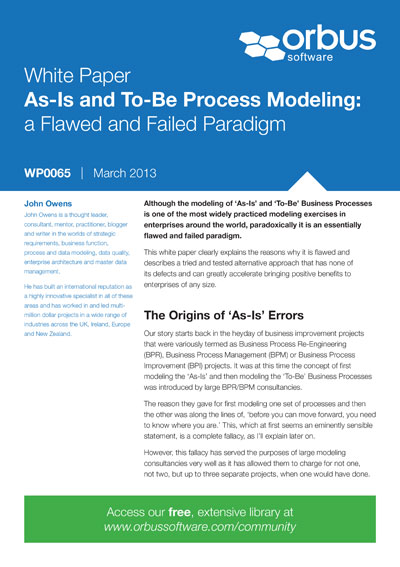A white paper explaining why the modeling of 'As-Is' and 'To-Be' Business Processes is flawed.
Although the modeling of ‘As-Is’ and ‘To-Be’ Business Processes is one of the most widely practiced modeling exercises in enterprises around the world, paradoxically it is an essentially flawed and failed paradigm.
The Origins of 'As-Is' Errors
Our story starts back in the heyday of business improvement projects that were variously termed as Business Process Re-Engineering (BPR), Business Process Management (BPM) or Business Process Improvement (BPI) projects. It was at this time the concept of first modeling the ‘As-Is’ and then modeling the ‘To-Be’ Business Processes was introduced by large BPR/BPM consultancies.
The reason they gave for first modeling one set of processes and then the other was along the lines of, ‘before you can move forward, you need to know where you are.’ This, which at first seems an eminently sensible statement, is a complete fallacy, as I’ll explain later on.
However, this fallacy has served the purposes of large modeling consultancies very well as it has allowed them to charge for not one, not two, but up to three separate projects, when one would have done.
Please login to continue reading this e-book from John Owens about As-Is and To-Be Process modeling.
